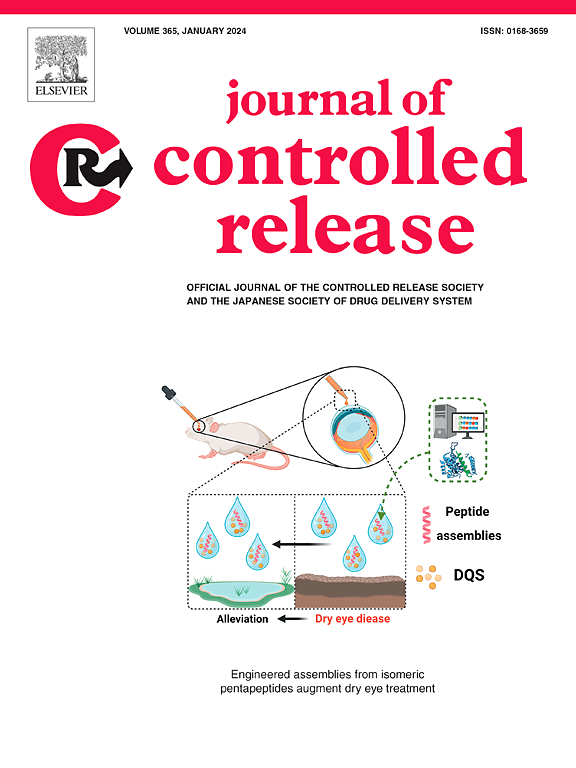Engineering sialylated N-glycans on adeno-associated virus capsids for targeted gene delivery and therapeutic applications
IF 10.5
1区 医学
Q1 CHEMISTRY, MULTIDISCIPLINARY
引用次数: 0
Abstract
Glycans with diverse biological functions have been extensively identified on enveloped viruses, whereas glycosylation on adeno-associated virus (AAV) serotypes remains poorly understood. Identifying potential glycosylation sites on AAVs could provide critical docking sites for rational engineering of AAV capsids, enabling targeted delivery of therapeutic genes. This study presents a strategy that integrates azido-monosaccharide metabolic incorporation, 1,2-diamino-4,5-methylenedioxybenzene-labeled sialic acid analysis, and mass spectrometry to identify N-glycosylation sites and glycoforms on AAVs. We identified sialylated N- oligosaccharides, particularly the conserved NNNS motif, on AAV2, AAV6, AAV7, and AAV9 capsids. These glycans play critical roles in maintaining capsid stability and enhancing resistance to neutralizing antibodies. Furthermore, we engineered an AAV vector with an azido-labeled terminal sialic acid, which was conjugated via click chemistry to cyclic Arg-Gly-Asp (RGD), a high-affinity ligand for integrin αvβ3, to generate an integrin-targeted delivery vehicle. This approach enabled the efficient delivery of c-Met-targeting shRNA in a glioma mouse model and facilitated CRISPR/Cas9-mediated SMOC2 knockout in a mouse model of kidney fibrosis using single-guide RNA (sgRNA). Our findings establish a foundation for creating editable AAV vectors through sialylated termini, thereby expanding their potential applications in basic research and therapeutic development.

求助全文
约1分钟内获得全文
求助全文
来源期刊

Journal of Controlled Release
医学-化学综合
CiteScore
18.50
自引率
5.60%
发文量
700
审稿时长
39 days
期刊介绍:
The Journal of Controlled Release (JCR) proudly serves as the Official Journal of the Controlled Release Society and the Japan Society of Drug Delivery System.
Dedicated to the broad field of delivery science and technology, JCR publishes high-quality research articles covering drug delivery systems and all facets of formulations. This includes the physicochemical and biological properties of drugs, design and characterization of dosage forms, release mechanisms, in vivo testing, and formulation research and development across pharmaceutical, diagnostic, agricultural, environmental, cosmetic, and food industries.
Priority is given to manuscripts that contribute to the fundamental understanding of principles or demonstrate the advantages of novel technologies in terms of safety and efficacy over current clinical standards. JCR strives to be a leading platform for advancements in delivery science and technology.
 求助内容:
求助内容: 应助结果提醒方式:
应助结果提醒方式:


